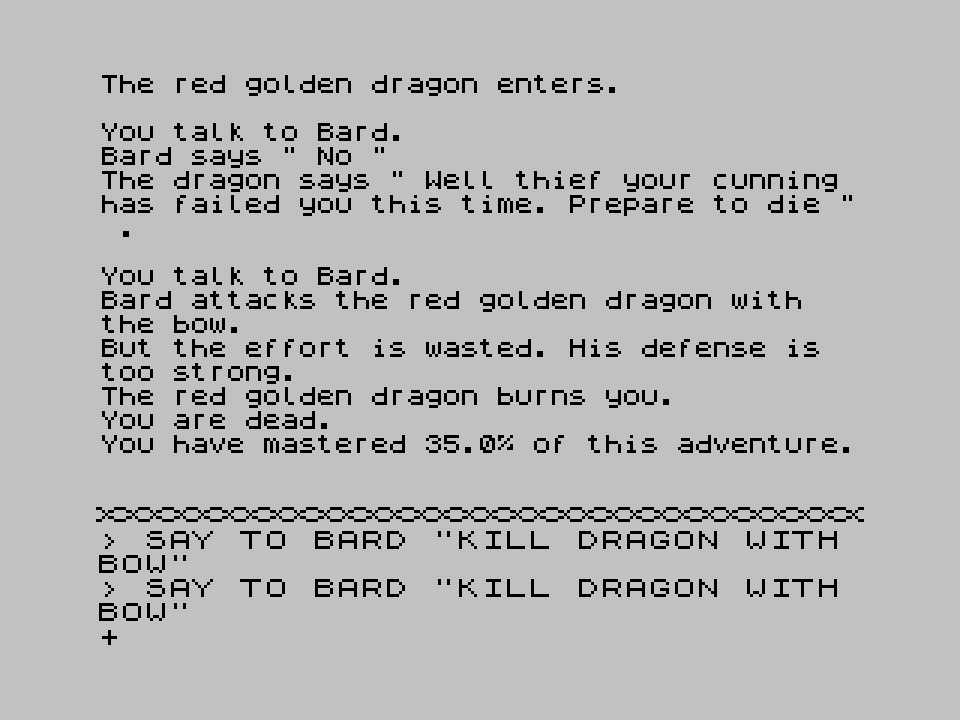Over the years, I’ve read a lot of writing about various theories of IF craft (much of it by very knowledgeable people whose work I admire), and I have seen much written about a few high points in the genre. However, popularity contests always have a long tail, and I thought it might be interesting to gather some examples from people here about what they consider to be great moments in IF of any type from any era.
I’m inviting you (yes, you!) to lay out your own description of a great moment and to try to make the rest of us understand what you liked about it. If you would like to participate, then when describing any great moment please try to mention: the work in which it occurred, your level of experience with IF when you encountered it, and what makes it great in your opinion. If you are an author, then please also add what (if anything) you learned about craft from it.
Please understand that this is not about what constitutes a great moment on some absolute scale – what constitutes a great moment will always be a subjective call, and the reasons that something seems great aren’t always easy to pin down with words. That said, I’m not looking for a rehash of the widely-known and widely-celebrated great moments (e.g. The Puzzle in Spider and Web, escaping the maze in Photopia, killing the dragon in Adventure, etc.). I’m looking for what the typical player has to say about their own subjective experiences of great moments, preferably ones that don’t have wide recognition. I would ask that if considering two or more different moments to post about, you choose the more obscure work and/or less-discussed moment.
Also, please understand that I really don’t want to see this thread get bogged down with various people criticizing the merits of someone else’s choice, as seems to have happened with this old thread: Memorable Moments in IF. Instead of your view on someone else’s selection, I think everyone reading would benefit much more from your view on a different great moment of your choosing.
Finally, note that this exercise is almost guaranteed to be EXTREMELY SPOILERY. I think it’s pretty clear that sometimes even just a little advance knowledge about a work can dramatically change one’s experience of it, so for the sake of fellow players please err on the side of caution when deploying spoiler tags.





